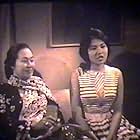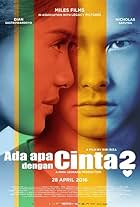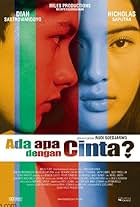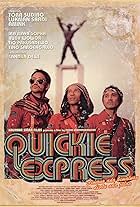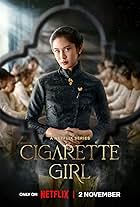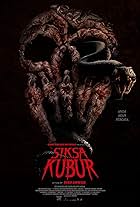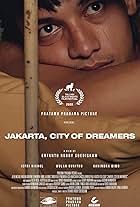Banyu (Tora Sudiro), a young supermarket customer service who is absorbed in his daily routine. A strange incident inspires him to hit the road and solve past family issues.Banyu (Tora Sudiro), a young supermarket customer service who is absorbed in his daily routine. A strange incident inspires him to hit the road and solve past family issues.Banyu (Tora Sudiro), a young supermarket customer service who is absorbed in his daily routine. A strange incident inspires him to hit the road and solve past family issues.
- Awards
- 1 win
Photos
Ladya Cheryl
- Mysterious fortunetelling girl
- (as Ladya Cheryll)
Asha Smara Darra
- Arif
- (as Oscar Lawalatta)
- Director
- Writers
- All cast & crew
- Production, box office & more at IMDbPro
Storyline
Did you know
- TriviaThe film is notable for the lack of any identifiable landmarks, which caused a stir during its premier by local journalists who were not used to surreal movies.
- ConnectionsReferenced in Dancing in the Rain (2018)
Featured review
Banyu Biru is an Indonesian surreal film about love, acceptance, and embracing the ephemeral nature of life. The movie was artfully directed by Teddy Soeriaatmadja and was released in 2005. The lead actor, Tora Sudiro, portrays Banyu, a lonely young man on a quest for answers from his father that he believes will allow him to reconcile the childhood tragedy that destroyed his family. Although this story could easily have been presented in a darker tone, Soeriaatmadja skillfully allows the tale to unfold in charmingly witty scenes. The overall effect is both heart rendering and though provoking.
Banyu Biru opens with a sweet, nostalgic scene of Banyu's parents dancing in their sunlit living room as the children play happily. Soft music plays in the background as the camera pans leisurely from one family member to the next. Almost immediately, the tone of the film changes to tragedy. This sharp contrast from one moment to the next, from one mood to an opposite mood, is repeated throughout the one hour movie. Switching on and off from heart to mind, from real to imagined, moves the viewer (along with Banyu) closer and closer to understanding the very pulse of life.
As Banyu travels place on his quest to confront his father, he is assisted by an unusual assortment of side characters: his uncle who has been married five times; the suicidal ex-lover of his uncle's current wife; a former neighbor girl named Sula, whom he had forgotten; a surly travel agent who bears an eerie resemblance to his human resource trainer at work; a gypsy with a flirtatious wife; an uncouth coffee-stand vendor; and a sympathetic transvestite. Each of these characters offers him their own kind of assistance but the common theme to their aid is that they each urge him to reconcile with his father regardless of the circumstances that originally contributed to the estrangement. Interestingly, the least likely characters are the kindest, while those one would expect to be helpful are blatantly discourteous.
Banyu Biru is indeed a quirky movie. Symbolism is heavily employed. The most obvious case is in the use of colors. Almost every object in the movie set belong to the blue hues or the oranges. A particularly poignant scene that took advantage of color symbolism occurs when Sula takes Banyu into a field of tall amber grass where together they enjoy peaceful solitude from the outside world. The colors of their clothing are reflected in the sunset. Sula is soft in glowing cream, like the light nearest the horizon, while Banyu wears a more intense coral, also seen in the receding sun. This harmonizing of characters into their natural surroundings is suggestive of how the two belong together as surely as the the tones of nature mix. It is at this moment that Banyu senses his first glimmer of peace as an adult. The colors and human expressions hint that he knows he has finally found where he belongs, now he knows his true destination--yet his journey must first be completed.
Toward the close of the story, Banyu has gained the understanding to allow him to accept life after tragedy and to make peace with his father. Rather than a neat and tidy final scene though, Soeriaatmadja inserts a few clues that there may be a twist in store for the audience. Some characters seem to share the same faces...events are not entirely logical, for example, all clocks point to 5:20, and certain unexplained recurring themes become difficult to accept...like tire swings, circles in architecture, and '67 Morris car. Why? The viewer will have to watch to see how all the illogical becomes logical before the final curtain falls.
Banyu Biru opens with a sweet, nostalgic scene of Banyu's parents dancing in their sunlit living room as the children play happily. Soft music plays in the background as the camera pans leisurely from one family member to the next. Almost immediately, the tone of the film changes to tragedy. This sharp contrast from one moment to the next, from one mood to an opposite mood, is repeated throughout the one hour movie. Switching on and off from heart to mind, from real to imagined, moves the viewer (along with Banyu) closer and closer to understanding the very pulse of life.
As Banyu travels place on his quest to confront his father, he is assisted by an unusual assortment of side characters: his uncle who has been married five times; the suicidal ex-lover of his uncle's current wife; a former neighbor girl named Sula, whom he had forgotten; a surly travel agent who bears an eerie resemblance to his human resource trainer at work; a gypsy with a flirtatious wife; an uncouth coffee-stand vendor; and a sympathetic transvestite. Each of these characters offers him their own kind of assistance but the common theme to their aid is that they each urge him to reconcile with his father regardless of the circumstances that originally contributed to the estrangement. Interestingly, the least likely characters are the kindest, while those one would expect to be helpful are blatantly discourteous.
Banyu Biru is indeed a quirky movie. Symbolism is heavily employed. The most obvious case is in the use of colors. Almost every object in the movie set belong to the blue hues or the oranges. A particularly poignant scene that took advantage of color symbolism occurs when Sula takes Banyu into a field of tall amber grass where together they enjoy peaceful solitude from the outside world. The colors of their clothing are reflected in the sunset. Sula is soft in glowing cream, like the light nearest the horizon, while Banyu wears a more intense coral, also seen in the receding sun. This harmonizing of characters into their natural surroundings is suggestive of how the two belong together as surely as the the tones of nature mix. It is at this moment that Banyu senses his first glimmer of peace as an adult. The colors and human expressions hint that he knows he has finally found where he belongs, now he knows his true destination--yet his journey must first be completed.
Toward the close of the story, Banyu has gained the understanding to allow him to accept life after tragedy and to make peace with his father. Rather than a neat and tidy final scene though, Soeriaatmadja inserts a few clues that there may be a twist in store for the audience. Some characters seem to share the same faces...events are not entirely logical, for example, all clocks point to 5:20, and certain unexplained recurring themes become difficult to accept...like tire swings, circles in architecture, and '67 Morris car. Why? The viewer will have to watch to see how all the illogical becomes logical before the final curtain falls.
- estellechamplain
- Aug 1, 2013
- Permalink
Details
Box office
- Budget
- IDR 5,000,000,000 (estimated)
- Runtime1 hour 18 minutes
- Color
Contribute to this page
Suggest an edit or add missing content





